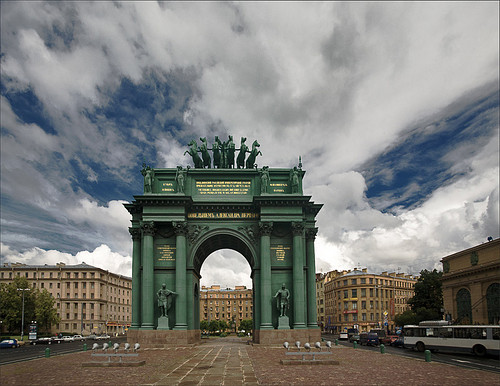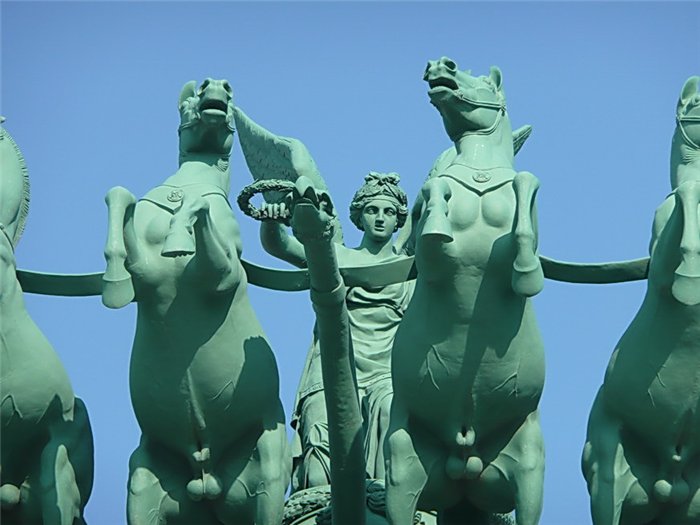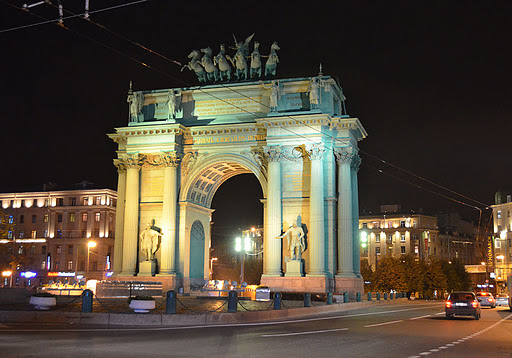|
The copper-plated Narva Gate, a
diminutive triumphal arch crowned by a statue of Victory astride her six-horde
chariot, was erected to commemorate the Napoleonic Wars in the center of
Ploschad Stachek, previously known as Narvskaya Ploschad and scene of the first
of the many fatal clashes on “Bloody Sunday”. The wooden structure was
constructed on the Narva highway with the purpose of greeting the soldiers who
were returning from abroad after their victory over Napoleon. The architect of
the original Narva Arch was Giacomo Quarenghi. The program was meant to respond
to the Arc de Triomphe du Carrousel in Paris, originally erected to celebrate
Napoleon's victory over the Allies at Austerlitz, but the material used was a
weather-resistant plaster that was never intended to be permanent.
Between 1827 and 1834 Vasily Stasov
redesigned and rebuilt the gate in stone. A sculptor Vasily Demut-Malinovsky
was responsible for the arch's sculptural decor. The single bay triumphal
arch's composition is similar to the ancient Roman triumphal arches, which were
normally built on a square near an entry to the city. During WWII the arch
suffered serious damage, but was carefully restored to its present condition in
1951. At the beginning of 21st century the gate was capitally restored and
according to experts is in a fine condition as of August 2009.
|





